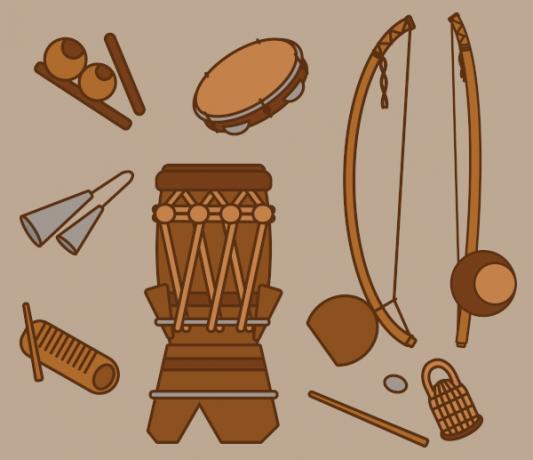O samba de roda is a Brazilian cultural expression with African and Portuguese roots that brings together poetry, music and dance. The style, which emerged in the State of Bahia, consists of a circle of people playing instruments, singing and dancing, and is related to capoeira, which also brings music, fights and poetry to the orixás.
Read too: African culture — a vast array of habits, customs, religions and arts
Origin of samba de roda
the samba de roda emerged in Bahia, around 1960, being more strongly recognized in the region of Recôncavo Baiano. The expression brings together cultural traditions brought by enslaved Africans, such as the cult of orixás and caboclos, and olive oil food. In line with this, there was also a blend with the cultural traits brought by the Portuguese, such as the viola, tambourine and the Portuguese language itself.
Characteristics of the samba de roda
In the samba de roda, several people gather in a circle to sing, play and dance. As far as music is concerned, the most common instruments are the viola, berimbau, agogô, rattle, tambourine, reco-reco and atabaque.

As for dancing, everyone in the circle is invited to dance in the center. It is more common for the women present to do the dance, but everyone can dance, clap, play instruments and sing.

the samba de roda it is usually performed at festivities and in candomblé terreiros for caboclos and orixás, but it can also be performed at any other time, as fun and collective celebration, for the pleasure of singing and dancing the samba.
See too: Carimbó — a circle dance that originated in the state of Pará
Samba de roda x samba carioca
Samba de roda differs from the famous samba of Rio de Janeiro in many ways. One of the main aspects that differentiates them is the organization of the dance.. While in samba de roda the circular position is important, the same does not happen in samba carioca.
![Samba school parading at the Sambadrome in Rio de Janeiro. [3]](/f/4a9b630132264a7bd5e535eaea02a01d.jpg)
Another difference is in the corner. The samba de roda has a collective song, associated with African music, while the carioca samba has as its one of its main characteristics is the singing of traditional songs from the popular musical culture of the country.
Furthermore, there is also a difference in terms of how practitioners are called. Practitioners of samba de roda are called “sambadores” and “sambadeiras”, and not “sambistas”, as in other parts of the country, including Rio de Janeiro.
Curiosities of samba de roda
The samba de roda from the Recôncavo Baiano was inscribed in the Book of Registration of Forms of Expression in 2004.
Unesco recognized samba de roda as Intangible Cultural Heritage of Humanity in 2005.
Unesco's recognition as Intangible Cultural Heritage of Humanity motivated Centro Cultural Cartola to analyze the various styles of samba in Rio de Janeiro, originating from musical meetings at Tia Ciata's house, in Estácio, in samba schools, blocks, hills, streets and backyards.
image credits
[1] Joa Souza / Shutterstock
[2] ThalesAntonio / Shutterstock
[3] T photography / Shutterstock
By Miguel Souza
Journalist


